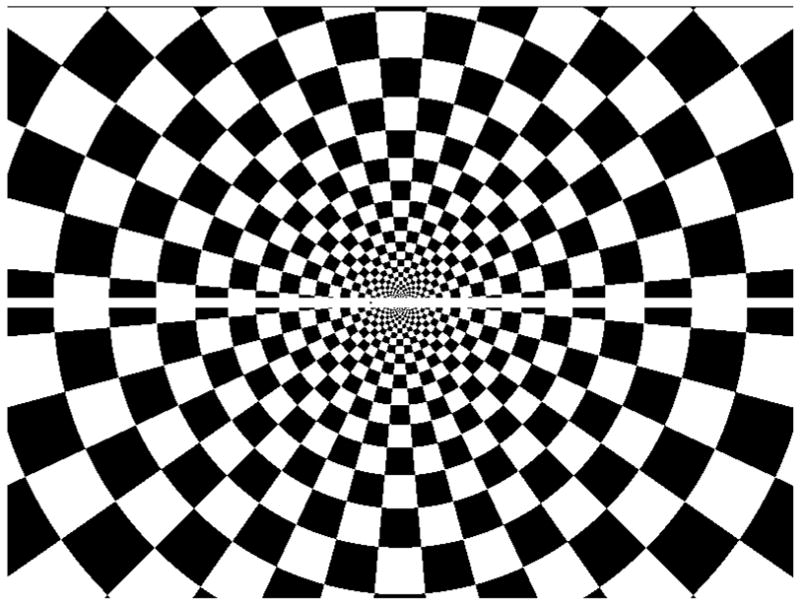Figure 2.

The stimulus was the same polar checkerboard in all three experiments. In experiment 1 the checkerboard was stationary and the fixation point jumped back and forth within the central horizontal white band 0.16, 0.38, 0.82, 1.64, and 3.28 visual degrees in a block design. In experiment 2 the checkerboard was stationary while the fixation point was placed on the central horizontal white band and remained stationary, except during the two 30s epochs at the beginning and end of each run, during which the fixation point, but not the checkerboard, alternated position pseudorandomly between 0.08 visual degrees to the left and 0.08 visual degrees to the right of the center for a 0.16 visual degree jump, in order to induce voluntary visually-guided saccades that were as small as microsaccades. Experiment 3: The fixation point remained stationary at the central location while the checkerboard jumped 0.08 visual degrees to the left and right of the fixation point, for a 0.16 visual degree jump of the background overall. The task was to maintain fixation on the fixation point throughout all three experiments, whether moving or not.
